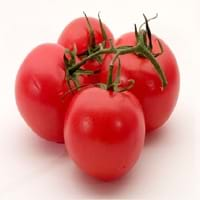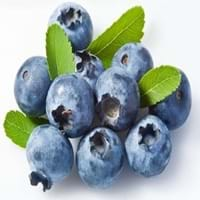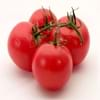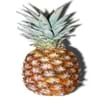Health Benefits
Anti depressant, Cancer prevention, Heart care, Muscle pain relief, Prevents constipation, Regulation of heart rate, Weight loss properties
Cancer prevention, Cures gastro-intestinal troubles, Improves night vision, Improves stomach health, Prevents diabetes, Prevents high blood pressure, Reduces blood circulation problems
General Benefits
Controls blood pressure, Eye care, Maintains healthy cholesterol level, Strengthens bones
Fights against infections, Helps in weight loss, Prevents blood clotting in vessels, Treatment of urinary tract infections
Skin Benefits
Anti-aging benefits, Heals sunburn, Skin rejuvenation, Treatment of acne, Treatment of skin diseases
Anti-aging benefits, Nourishes skin, Protects against skin damage
Hair Benefits
Good conditioner, Prevents hair loss, Softening mask
Prevents hair loss
Allergy Symptoms
Anaphylaxis, Coughing, Diarrhea, Eczema, Hives, Itching sensation in throat, Nausea, Skin Rashes, Runny nose, Sneezing, Swelling of mouth, tongue or lips, Vomiting, Wheezing
Not Available
Side Effects
Heart burn
Decrease in blood sugar levels, Diarrhoea, Dizziness, Headache, Internal bleeding, Stomach pain
Best Time to Eat
Along with meal, Don't consume at night and before bed, Morning time (before lunch)
As a snack in the late afternoon, Don't consume at night and before bed, Eat the fresh ones, avoid mixing with any other foods, don't eat after meal., Morning time (before lunch)
Vitamin B5 (Pantothenic Acid)
Vitamin C (Ascorbic Acid)
Vitamin K (Phyllochinone)
Phytosterol
Not Available
Calories in Fresh Fruit with Peel
Calories in Fresh Fruit without Peel
Not Available
Not Available
Calories in Frozen Form
Not Available
Calories in Dried Form
Not Available
Calories in Canned Form
Not Available
Type
Berry, Fruit vegetable
Berry
Season
All seasons
Summer
Varieties
Better Boy, Early Girl, Beefsteak, Beefmaster, Pink Brandywinem, Caspian Pink, Thai Pinks, Hawaiian Pineapple, Kellogg’s Breakfast, Cherokee Purple, Black Ethiopian and Paul Robeson
Dwarf bilberry, Piper, bog blueberry, Northern bilberry, Mountain bilberry and Oval-leaved bilberry
Color
Green, Orange, Pink, Purplish black, Red, White, Yellow
Dark purple
Inside Color
Red
Light Green
Origin
Central America, South America
Unknown
Soil Type
Loam, Sandy loam
Moist, Well-aerated
Climatic Conditions
Sunny, Warm
Cold
Facts about
- Around 10,000 varieties of tomatoes are grown in the world.
- In Buñol, people celebrate the Tomatina festival where around 1.5 lakh tomatoes are used.
- As per Guinness book of records, heaviest tomato weighed 3.51 kg.
- Bilberries are used in manufacturing of alcoholic drinks.
- They are used to improve aromas of sorbets.
- The green extract of it's leaves is used in textile industry as natural dye.
Other Countries
Brazil, Egypt, India, Iran, Italy, Mexico, Spain, Turkey, United States of America
Denmark, Finland, Iceland, Sweden
Top Importer
Nigeria
United States of America
Top Exporter
Netherlands
Chile
Botanical Name
Solanum lycopersicum
Vaccinium myrtillus
Synonym
Lycopersicon esculentum
blaeberry, whinberry, European blueberry, whortleberry
Subkingdom
Tracheobionta
Tracheobionta
Division
Magnoliophyta
Magnoliophyta
Class
Magnoliopsida
Magnoliopsida
Subclass
Asteridae
Dillenhidae
Family
Solanaceae
Ericaceae
Species
S. lycopersicum
Vaccinium myrtillus
Generic Group
Nightshade
Heath
Difference Between Tomato and Bilberry
We might think that Tomato and Bilberry are similar with respect to nutritional value and health benefits. But the nutrient content of both fruits is different. Tomato and Bilberry Facts such as their taste, shape, color, and size are also distinct. The difference between Tomato and Bilberry is explained here.
The amount of calories in 100 gm of fresh Tomato and Bilberry with peel is 18.00 kcal and 44.00 kcal and the amount of calories without peel is Not Available and Not Available respectively. Thus, Tomato and Bilberry belong to Low Calorie Fruits and Low Calorie Fruits category.These fruits might or might not differ with respect to their scientific classification. The order of Tomato and Bilberry is Solanales and Ericales respectively. Tomato belongs to Solanaceae family and Bilberry belongs to Ericaceae family. Tomato belongs to Solanum genus of S. lycopersicum species and Bilberry belongs to Vaccinium genus of Vaccinium myrtillus species. Beings plants, both fruits belong to Plantae Kingdom.









